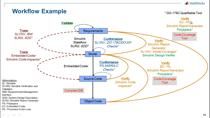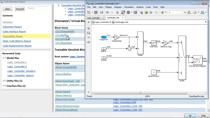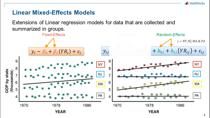AI with Model-Based Design: Virtual Sensor Modeling
Overview
Virtual sensor (also known as soft sensor) modeling is a powerful technique for mimicking the behavior of a physical sensor when the signal of interest cannot be directly measured, or when a physical sensor adds too much cost and complexity to the design. For example, when developing a Battery Management System (BMS) for electrified systems, having an accurate value of the Battery State of Charge (SOC) is a critical design element, and it is challenging to directly measure the SOC. AI-based techniques can be applied as alternatives or supplements to Kalman Filters and other well-known techniques. Another example is using deep learning to estimate motor position for control applications and eliminate the cost of sensor hardware. However, as you integrate AI models into these applications, they must be verified and tested with other parts of the overall system to ensure reliability and safety in operation. The AI models should also satisfy compute requirements when being deployed onto resource-constrained embedded devices.
The examples of SOC in BMS and motor position estimation demonstrate the integration of AI models into system-level design, the execution of validation and verification activities, and the trade-off management between different deployment objectives. This process involves linking design to requirements and tests for full traceability, simulating the AI model within the larger system, and applying both simulation-based testing and formal neural network verification techniques. It also includes compressing the AI model, evaluating performance, memory, and accuracy tradeoffs, and automatically generating code for processor-in-the-loop (PIL) testing and production deployment on embedded systems, such as an NXP microcontroller board.
The presented workflow offers an end-to-end solution for designing, training, validating and verifying, compressing, and deploying AI-based virtual sensor models to embedded processors within a single environment.
Highlights
- Design and train AI-based virtual sensors using MATLAB
- Import trained models, such as from TensorFlow, into MATLAB and Simulink
- Integrate AI models into Simulink for system-level simulation, verification, and simulation-based testing
- Apply formal verification techniques to assert neural network behavior
- Compress the AI model for memory footprint reduction and execution speedup
- Generate library-free C code from AI models and performing PIL tests
- Profile code performance and evaluate design and model selection tradeoffs
About the Presenter
Tianyi Zhu is a product marketing manager at MathWorks focused on Simulink® and AI. He helps engineers worldwide adopt Model-Based Design, integrate AI functionality into embedded systems, and leverage the power of modeling and automation to accelerate development processes. Tianyi holds an M.S. in Engineering Management and M.S. and B.S. degrees in Electrical and Computer Engineering, all from Carnegie Mellon University.
Recorded: 18 Dec 2024




